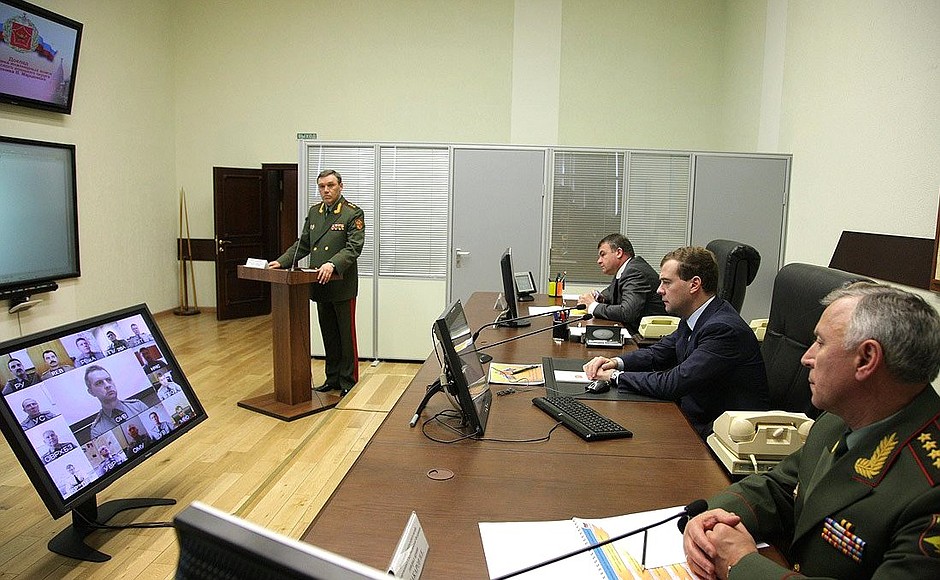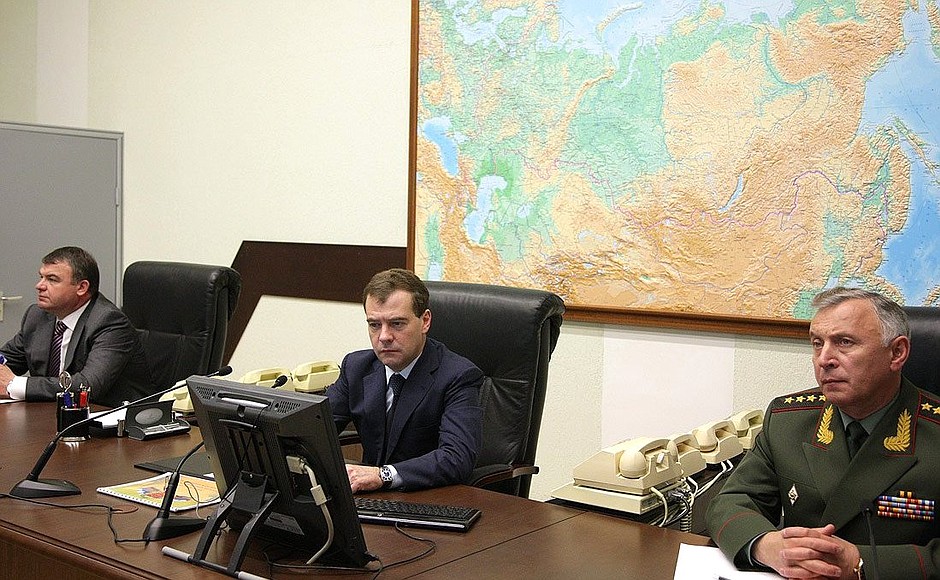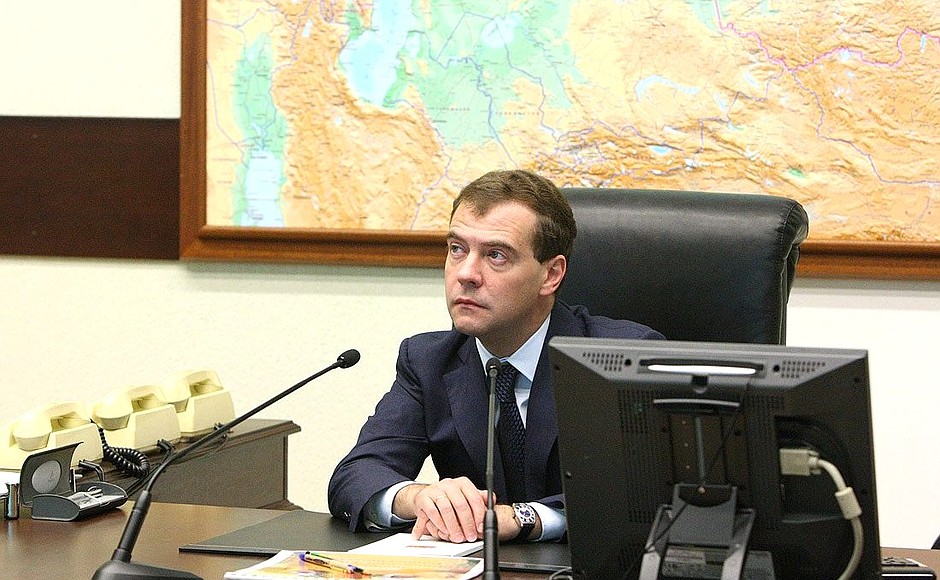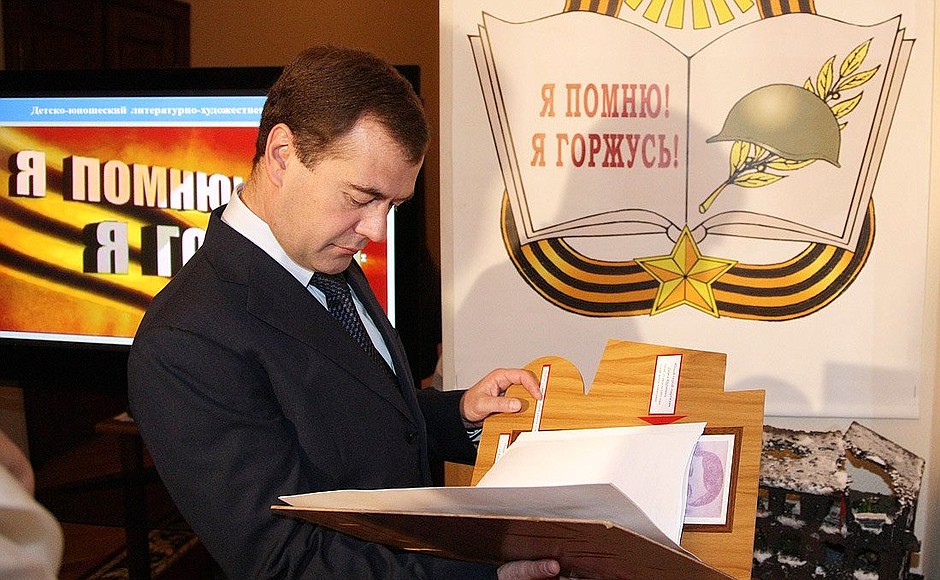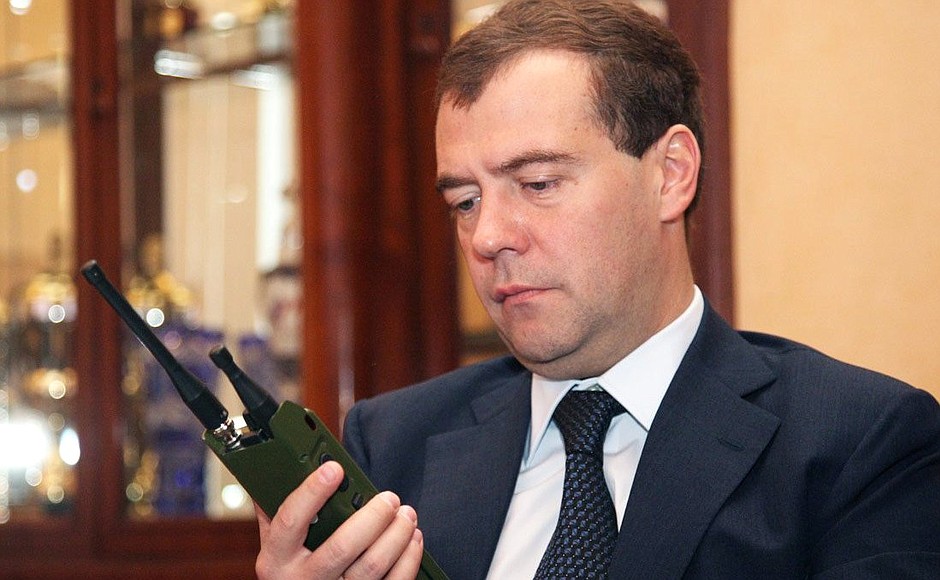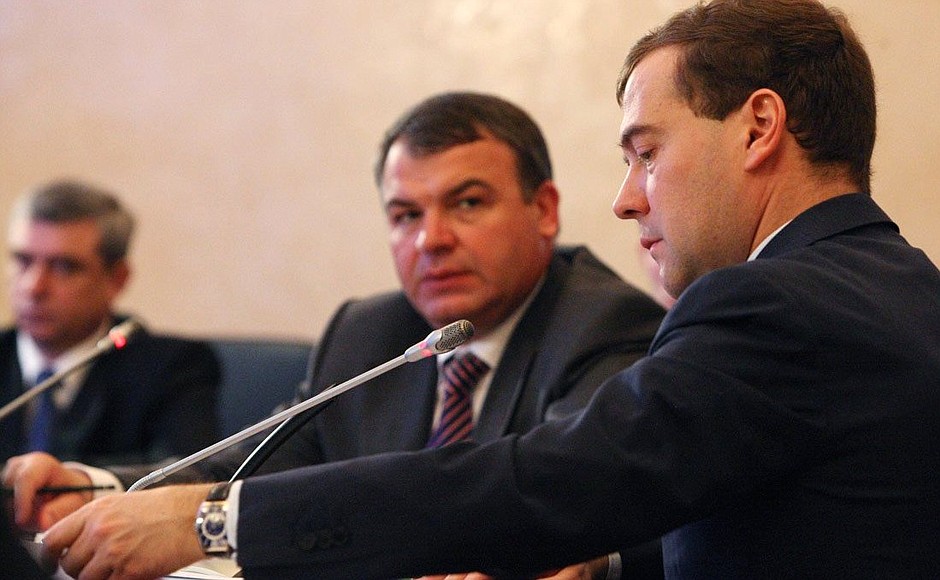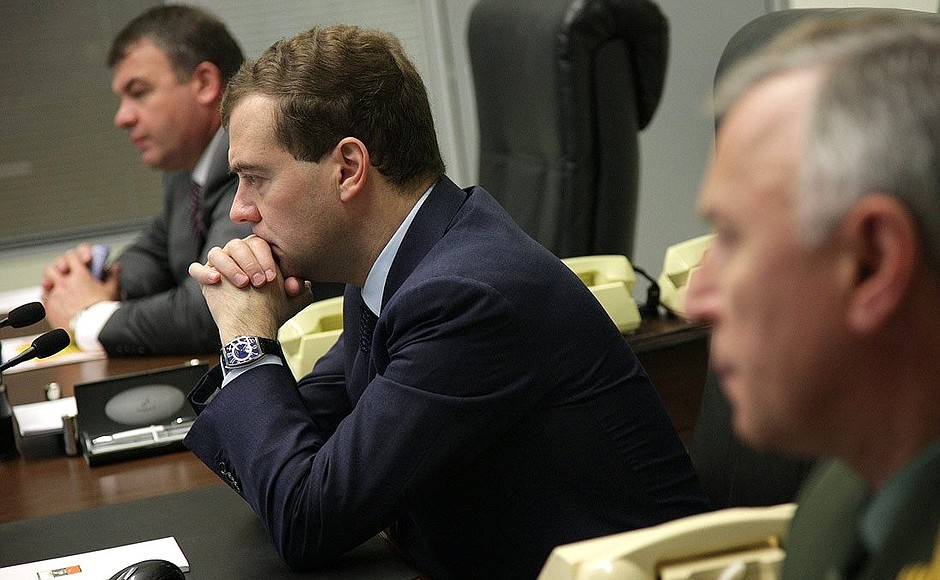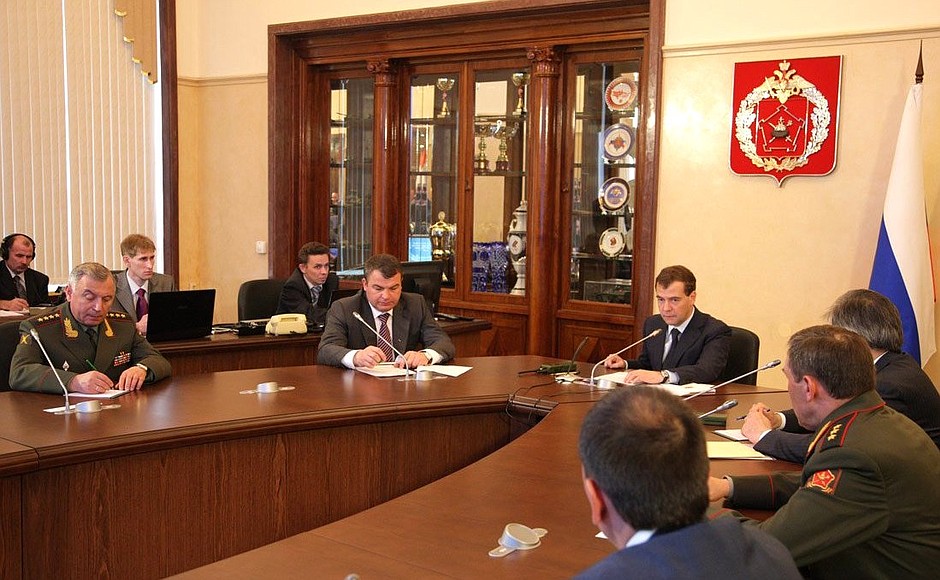Mr Medvedev noted that his Annual Address to the Federal Assembly set the task of establishing automated command and information centres throughout the Armed Forces. Armed Forces units are now receiving new generation communications technology as part of the modernisation being carried out under the State Arms Programme for 2007–2015. Multifunctional communications systems are a vital component in combat readiness and are extremely important for command bodies responsible for strategic planning, and for commanders at all levels, the President stressed.
Dmitry Medvedev said that IP telephony, videoconferencing, and electronic document processing must all become integral parts of the Armed Forces’ operation.
The President also set the task of making most effective use of the GLONASS satellite navigation system for coordinating troops in real time and said that satellite reception devices should be built into field communications equipment and installed on military vehicles.
At the Moscow Military District headquarters Mr Medvedev was briefed on internet projects to publish archive materials related to the Great Patriotic War. The President heard reports from the head of the Moscow Military District’s Engineering Corps and the Baltic Fleet commander via videoconference.
* * *
President of Russia Dmitry Medvedev: Comrades, colleagues,
We have just looked over the Moscow Military District Operation and Tactical Command Centre. It is modern and offers a new level of technology that I hope will guarantee reliable communications and information exchange.
As I understand it, weekly reports by the district’s commanders via videoconference have become routine practice. This is not an event put on for show especially for the Commander-in-Chief’s visit, but is a genuinely functioning system.
I have no need to convince the military commanders here that multifunctional communications systems and technology play a key part in troops’ combat preparedness. They are extremely important for the command bodies responsible for strategic planning, and for commanders at all levels. Military commanders will be able to exchange much more information and at a much faster pace thanks to this technology.
Command systems must offer both analytical and forecasting capability. This is an area in which we still have much improvement to make.
It was for this reason that in my Annual Address to the Federal Assembly last year I set the task of ensuring that the Armed Forces have automated command and information centres. Today we will analyse what we have accomplished so far and what problems need to be addressed in top priority.
We know that the Armed Forces are receiving new generation communications technology under the state arms development programme for 2007–2015. Substantial funds have been invested in research and development and mass-lot purchases of technology in this area.
Even more money will be invested in the new arms procurement programme. But at the same time, we know that replacing old equipment has turned out to be a slow process, and in a number of cases the quality of communications is still completely unsatisfactory, to put it frankly. We have had instances of communications working poorly at crucial moments.
The problem is that, for the most part, outdated analogue equipment still dominates throughout the different branches of the Armed Forces. I do not know the exact share in each branch, but I do follow this situation and, although I am not a specialist, I do have eyes, and wherever I go I see that equipment is outdated and presents a sorry picture.
The overall share of obsolete equipment of this kind comes to 85 percent. Eighty percent of fixed-line communications cables need to be replaced. There are other problems too.
In this respect I draw the attention of all present including the Defence Minister and the other military commanders to several important points.
First of all, work on developing a common command system for troops and weapons at the tactical level is scheduled for completion this year. The timetable for this work was set by the presidential executive order of August 30, 2000, and must be respected. By 2012 we should replace all outdated analogue communications systems with digital technology, and I stress the word ‘all’.
Priority in shifting over to digital systems goes to the units in the North Caucasus Military District, as we agreed, and our elite units that carry out special missions.
We must not forget that digital communications technology is needed not only at stationary facilities but also in field conditions, and at the same time, all units and command organisations need to be linked together into a single commutation network.
Second, we need to employ the most effective technology in our modernisation work, and this means using not just Russian technology but foreign technology too. We must make use of dual use technology, and, where possible, of civilian technology. I am referring to technology that has entered practically every household now and become a part of ordinary life, but, unfortunately, is not employed (or is little employed) in the army – technology such as IP telephony, videoconferencing, and electronic paperwork. These are all things that should become an integral part of the Russian Armed Forces’ operation.
Third, work on putting together the GLONASS satellite constellation is near completion now. We should make effective use of the possibilities it offers for coordinating troops in real time, and we are to install our satellite reception equipment in field communications systems and on military vehicles.
Fourth, we need to continue the work to computerise our military garrisons and bases. Modern communications lines, cable television and internet access are all things that will help to give servicemen and their families better living conditions. This is especially true of remote garrisons, where this technology is simply a vital element of life. This all needs to be part of the overall programme.
Finally, we are continuing to digitalise archive materials related to the Great Patriotic War. We just saw a very good presentation. The Defence Ministry is pursuing this work. A relatively small but nonetheless significant part of 230,000 operations data files and 30 million files on award of decorations has already been published on the portal Podvig Naroda [The People’s Feat].
We saw just now that the portal is up and running and looks very good. The fact that 1.5 million people have visited the site in the short time since it opened is evidence of the great interest out there in these invaluable documents. As we agreed, work on digitalising these archives should be completed by the end of 2012.
<…>
